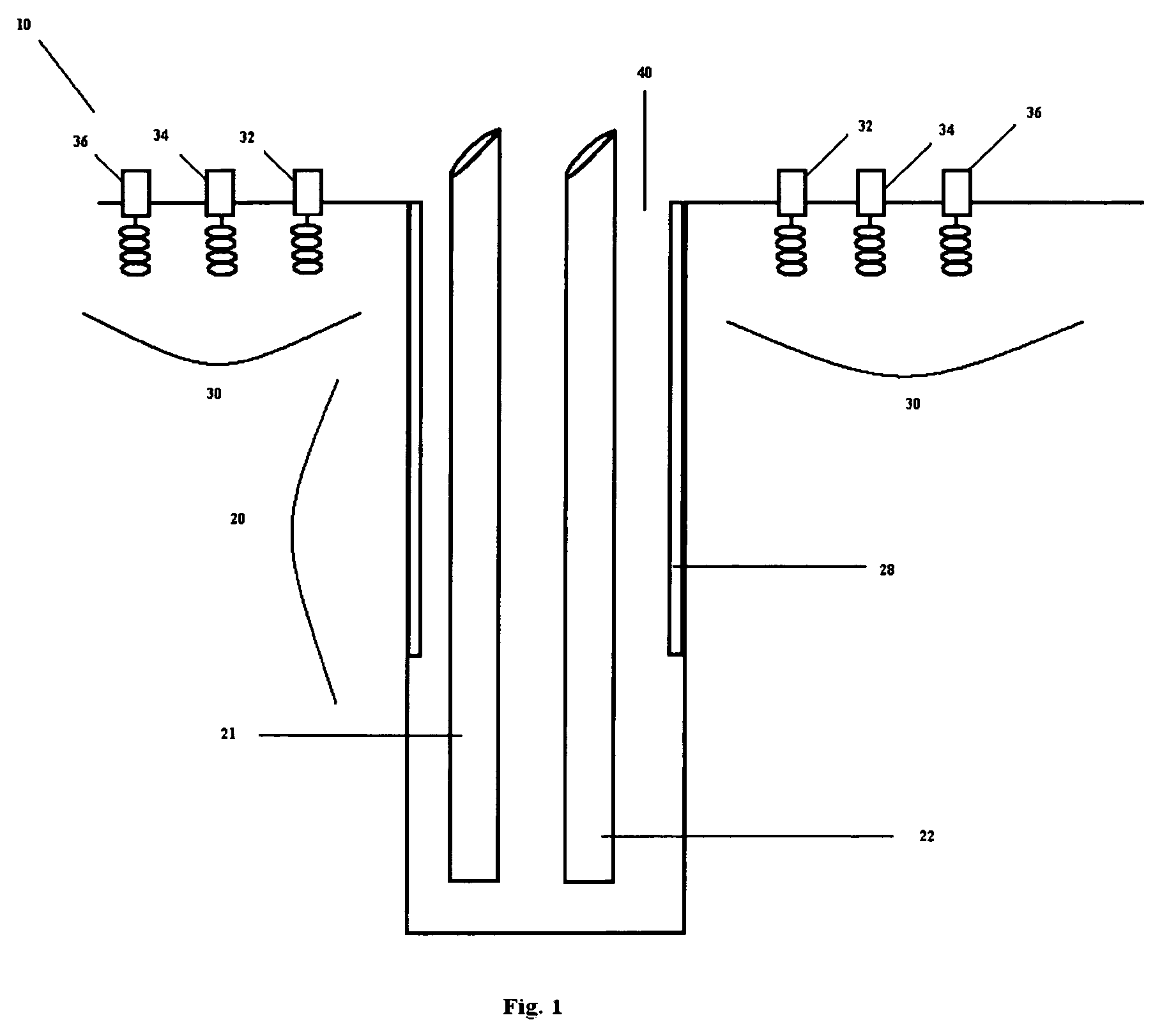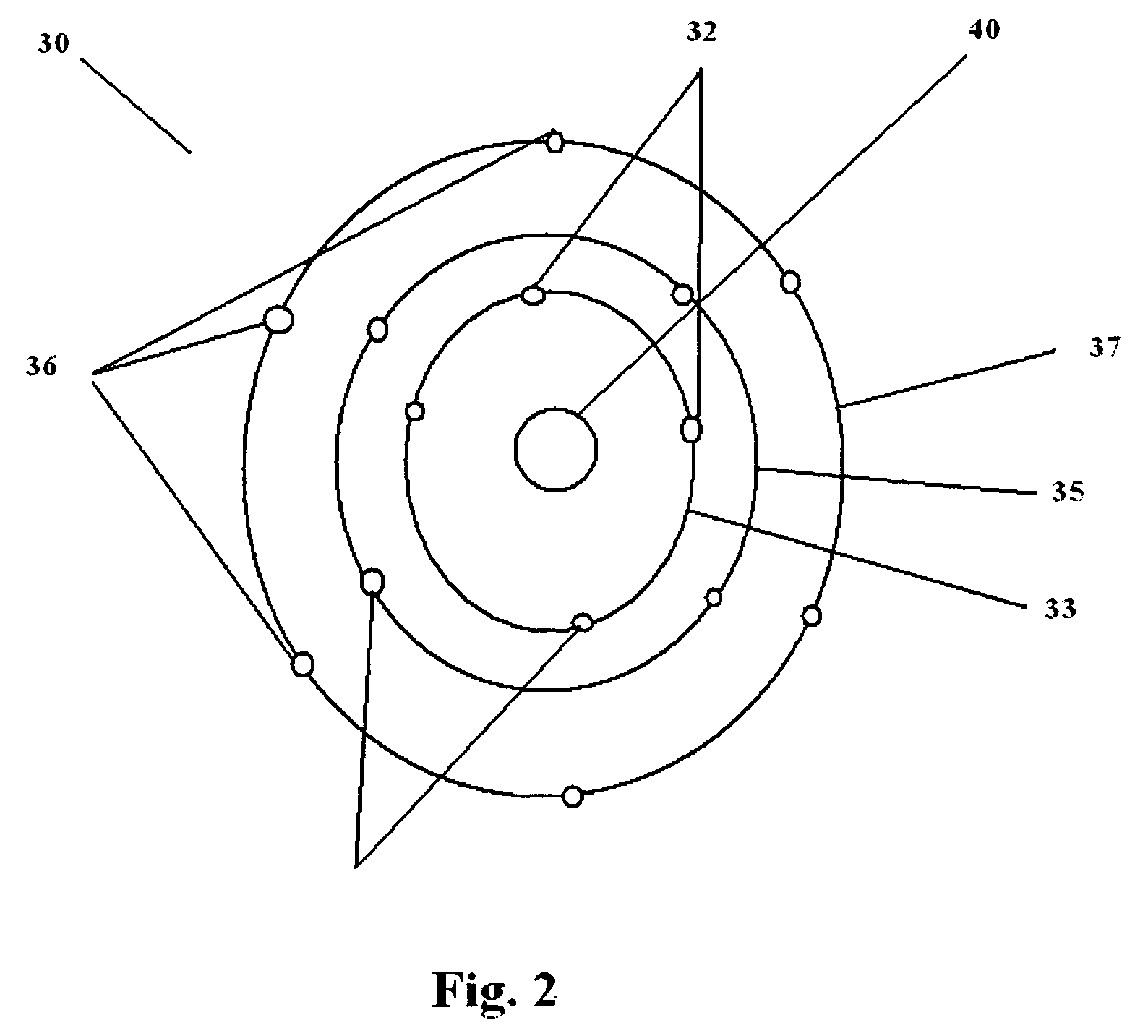Subsurface imagery for temperature measurement and fluid flow for oil recovery using electromagnetic impedance tomography (EMIT)
a technology of electromagnetic impedance tomography and subsurface imagery, which is applied in the direction of instruments, detection using electromagnetic waves, and borehole/well accessories, etc., can solve the problems of inability to take into account or take advantage of limited quality and utility of image created using current system and method, and inability to give a three-dimensional image over a large volume of conventional cross-borehole eit methods
- Summary
- Abstract
- Description
- Claims
- Application Information
AI Technical Summary
Benefits of technology
Problems solved by technology
Method used
Image
Examples
Embodiment Construction
[0016]The dynamic tracking of subsurface fluid movement and three dimensional temperature measurement based on the change in resistivity or dielectric properties with temperature such as created by borehole selective radio frequency heating or steam drive in a reservoir of heavy crude oil can be provided by the principles of EMIT as described herein. This application requires a special arrangement of borehole and surface antenna structures sufficient in number and distribution to track the movement of the moving fluids during the application radio frequency heating or steam drive (“EMIT Antenna Array”). By providing generally circular arrays of magnetic and electric receiving elements consisting of concentric arrays of increasing diameter and a single transmitting borehole containing a solenoid-like antenna, real time tracking of the direction and spread of the hot fluids can be determined so as to optimize the oil recovery method. The arrangement of receivers on the surface need no...
PUM
 Login to View More
Login to View More Abstract
Description
Claims
Application Information
 Login to View More
Login to View More - R&D
- Intellectual Property
- Life Sciences
- Materials
- Tech Scout
- Unparalleled Data Quality
- Higher Quality Content
- 60% Fewer Hallucinations
Browse by: Latest US Patents, China's latest patents, Technical Efficacy Thesaurus, Application Domain, Technology Topic, Popular Technical Reports.
© 2025 PatSnap. All rights reserved.Legal|Privacy policy|Modern Slavery Act Transparency Statement|Sitemap|About US| Contact US: help@patsnap.com



